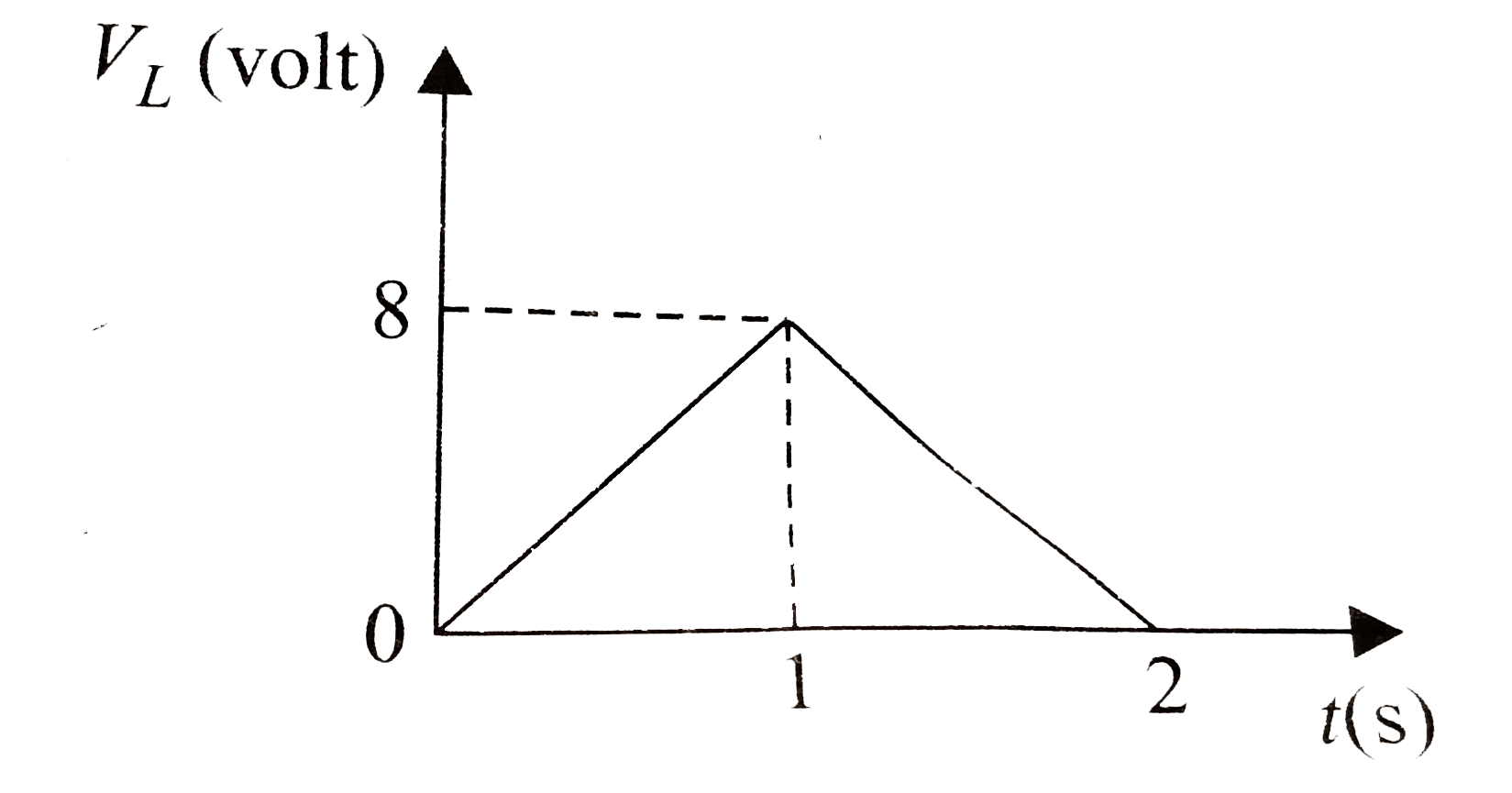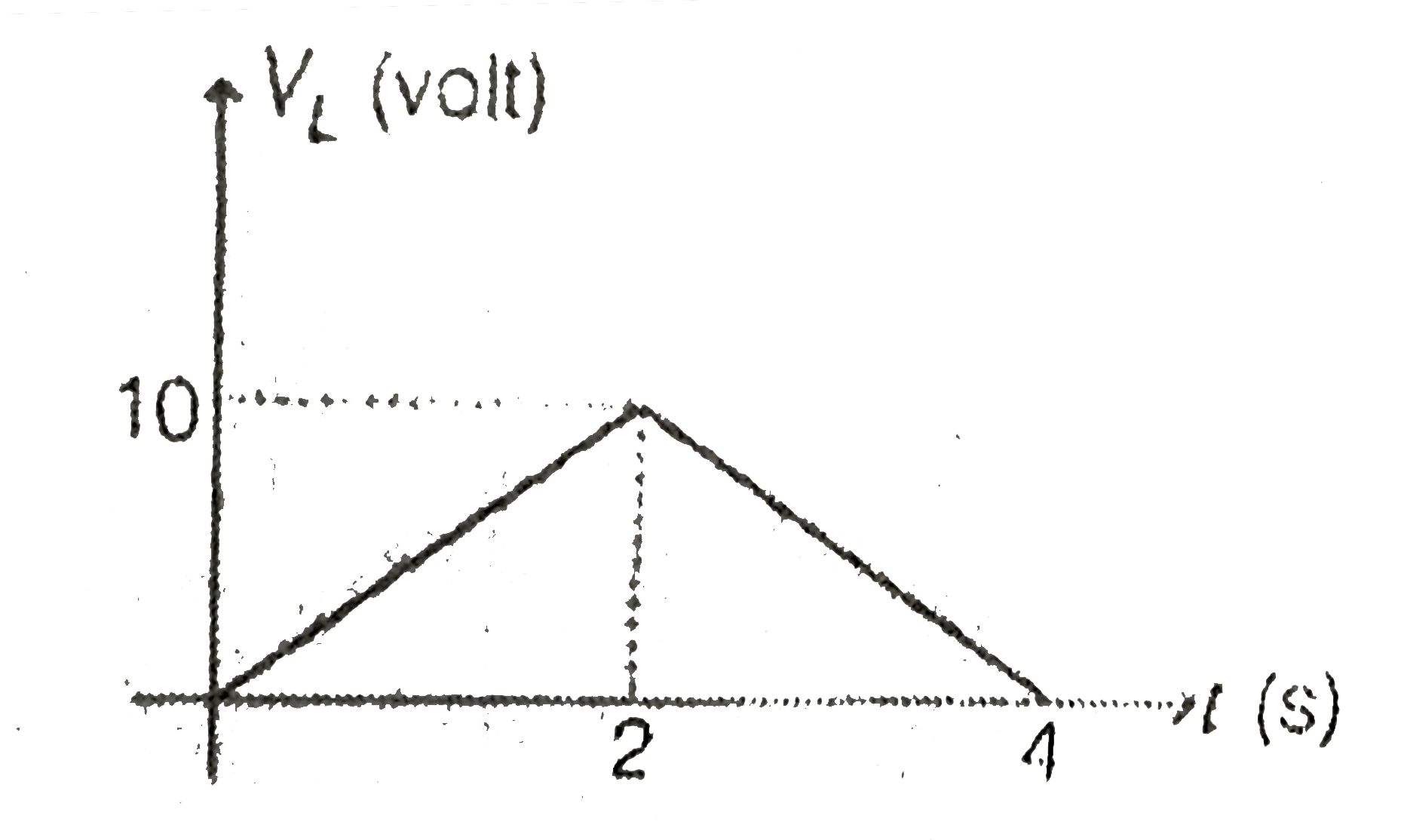The potential difference across a 2-H inductor as a function of time is shown in Fig. At time t=0, current is zero.

Area under VL−t graph gives
current
change in current
product of inductance and current
product of inductance and change in current
The correct Answer is:D
Since VL=Ldidt
Ldi=VLdt
Integrating L∫di=∫VLdt
Lif−ii=∫t0VLdt = area under VL−t graph.
Topper's Solved these Questions
- MISCELLANEOUS VOLUME 5BOOK - CENGAGE PHYSICSCHAPTER - MISCELLANEOUS VOLUME 5EXERCISE - Integer
12 Videos
- MISCELLANEOUS VOLUME 5BOOK - CENGAGE PHYSICSCHAPTER - MISCELLANEOUS VOLUME 5EXERCISE - Multiple Correct
34 Videos
- MISCELLANEOUS VOLUME 3BOOK - CENGAGE PHYSICSCHAPTER - MISCELLANEOUS VOLUME 3EXERCISE - True and False
3 Videos
- Moving charges and magnetismBOOK - CENGAGE PHYSICSCHAPTER - Moving charges and magnetismEXERCISE - Question Bank
20 Videos
Similar Questions
The potential difference across a 150mH inductor as a function of time is shown in figure. Assume that the initial value of the current in the inductor is zero. What is the current when t=2.0ms? and t=4.0ms ?

View SolutionThe potential difference across a 2-H inductor as a function of time is shown in Fig. At time t = 0, current is zero.

The variation of current versus time is
View Solution
Knowledge Check
The potential difference across a 2-H inductor as a function of time is shown in Fig. At time t = 0, current is zero.

Current at t = 1 s isA1AB2AC4AD8AThe potential difference across a 10H inductor as a function of time is shown in the figure. At t=0 current is zero. Then
 AThe current in the inductor at t=6 is 3 ampBThe current in the inductor at t=1 sec is 1/4 ampCThe current in the inductor at t=4 is 5/2 amp.DThe variation of current versus time parabola.
AThe current in the inductor at t=6 is 3 ampBThe current in the inductor at t=1 sec is 1/4 ampCThe current in the inductor at t=4 is 5/2 amp.DThe variation of current versus time parabola.The potential difference across a 2H inductor as a function of time is shown in figure. At time t=0, current is zero
Current t=2 second is
 A1AB3AC4AD5A
A1AB3AC4AD5A
The potentiak difference across a 2H inductor as a function of time is shown in the figure. At time t=0, current is zero.

Current versus time graph across the inductor will be
View SolutionThe potential difference across a 2−H inductor as a funtion of time is shows in Fig. At t=0, current is zero. Choose the corrent stetement.

View SolutionThe potential difference a 2H inductor as a function of time is shown in figure. At time t=0, current is zero
Current versus time graph across the inductor will be
View SolutionThe potential difference across a 4 H inductor vary with time is as shown. The current is Zero at t=0, Then the current at time t=2s

View SolutionTwo capacitors of capacitance C and 3C are charged to potential difference V0 and 2V0, respectively, and connected to an inductor of inductance L as shows in Fig. Initially, the current in the inductor is zero. Now, switch S is closed.

Potential difference across capacitor of capacitance C when the current in the circuit is maximum is
View Solution
